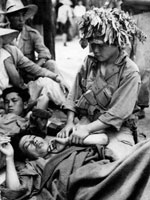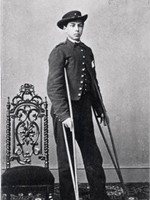The Story of Veterans Day
This short, accessible presentation, created in connection with the History Channel and the Library of Congress's Take a Veteran to School Day, looks at what a veteran is, which wars American veterans have fought in, the history of Veterans Day, and the experiences of veterans alive today.
Though not a critical look at American history, it provides an introduction to the U.S.'s participation in wars and the concepts of service to the country and memorialization of service. It might also be contrasted with more critical looks at wartime service in U.S. history, or analyzed for its use of patriotic imagery.


